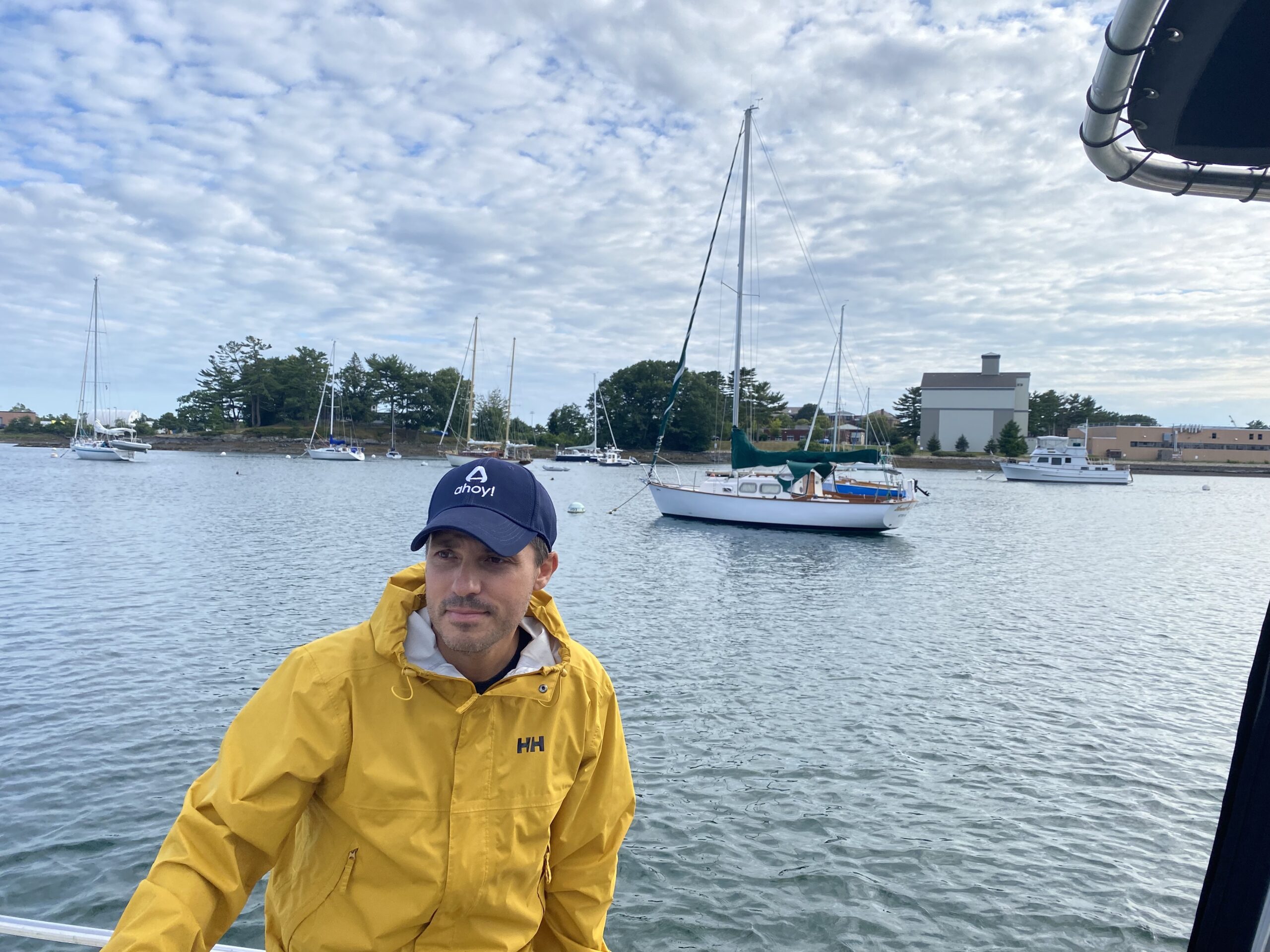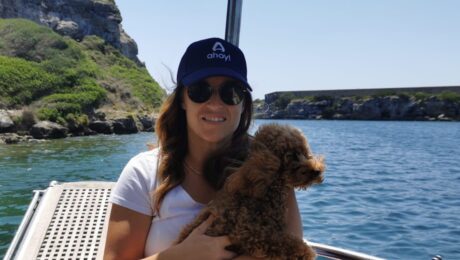Growing up in the 1980s when baseball cards, space camp and video games dominated the conversation among my peers, I was busy tinkering with model boats and learning to sail. My tendencies to focus on “other stuff” (outside the norm) led to working with Ahoy! where “other stuff” is core and people like myself endeavor to connect the dots in a different meaningful way that incites change as well as benefits society.
Doing things differently, however, doesn’t necessarily mean throwing caution to the wind. I should know - as a marine insurance underwriter, I spend a lot of time considering risk factors and how best to manage them.
I have always been fascinated by boats, in particular by how they are designed and built. My family owned a boat, and by the time I was a teenager I spent most of my free time racing aboard boats ranging from 24 to 50 feet in New England and Cape Cod, as well as sailing my 14' Laser Olympic class dinghy.
My parents and grandparents both worked in the insurance industry, so it was no real surprise that my first job was with an insurance agency. A few years later I moved into the emerging Insurtech arena in Boston and gained experience in IT and project management.
Alongside my day job, I rekindled my personal interest in boats and became qualified through the Navtech / US Surveyor’s Association (USSA) as a marine surveyor recognized by the American Institute of Marine Underwriters (AIMU). My business provided vessel surveys for private clients who needed insurance, and were used by underwriters and loan officers. That experience helped me really understand the American Boat and Yacht Council (ABYC) standards for recreational watercraft. As a surveyor, you see first-hand whether the boat complies or not with certain safety standards or features that would be attractive from a risk standpoint.
The next port of call for me was a senior yacht underwriter position with a large insurance company. Now I was reviewing and approving the boat surveys (instead of conducting them), assessing the risk and tailoring contracts that would insure boats. The process was still clunky and cumbersome, since the products of a traditional insurance company are not specifically designed for boaters and have to be modified and often limited.
There is a huge demand for boat insurance right now. Since 2020, the used boat market has exploded due to the Covid pandemic. Everyone wanted to be socially distant, and what better way than on a boat, right? Unfortunately, used boat prices have also become inflated, and are nearly twice what the fair market book value of a particular boat would be. People are way overpaying, and maybe that’s true of all asset classes but I think recreational boats have been particularly affected.
Premiums have doubled in the last three years and everyone is trying to get the best coverage. A lot of folks are really hard pressed to get the right coverage for their boat at a price they want to pay.
To really get a good user experience the foundation is a solid product. In the Ahoy! world, everything we do is systematic and driven by the customer. We are very transparent as to what we can and cannot do, which I think is more equitable and fair for the consumer. It’s not “one size fits all,” but there is a more seamless experience than what a traditional underwriter at a legacy company would have to go through when underwriting a boat.
The way Ahoy! is underwriting makes insurance more equitable for all consumers. The rates are more consistently and accurately matched to the exposure and people will get the fairest price they possibly can for the particular level of insurance that they are purchasing. We do that in a way that’s extremely service oriented and time efficient.
At Ahoy! we aim to bring additional value to the boating community. We make sure that in parallel to underwriting the risks there is proactive technology coming onboard to prevent certain types of common losses. Our proprietary mobile application that insureds can download to their phone will notify them when they are in shallow water and alert them to slow down or turn around to avoid a collision. Striking a submerged object is one of the most common types of losses I’ve seen as an underwriter.
We’re doing things in a way that is aligned with our social mission: to keep people on the water longer and safer through access to technology. By doing so we also reduce the number of claims that we potentially pay out which in the long run should help us improve our prices as well. Technology helps us with good risk selection through the front end, in underwriting policies.
Our team has a unique understanding of the particular risks we are underwriting and the contracts we issue. This ensures that the coverage language is as broad as it can be and has the proper safeguards and exclusions in place to protect both the company and the consumer. From my perspective, the need to do things differently actually reduces risk and provides more transparency for fairer coverage at a competitive price.
At first glance, insurance, boats and technology may seem like three completely unrelated things that don’t fit into one box. The Ahoy! team combines expertise in these seemingly diverse backgrounds and talents to build something that’s never been done before.
I think the risk and commitment that this company has undertaken to change the future for the boating community is admirable and inspiring. It keeps me getting up every day.
Who would have thought being “off the water” could be as fun as being on the water? When I do have to punch out though, you’ll likely find me sailing, surfing or coastal sea kayaking along the rocky coast of Maine.


